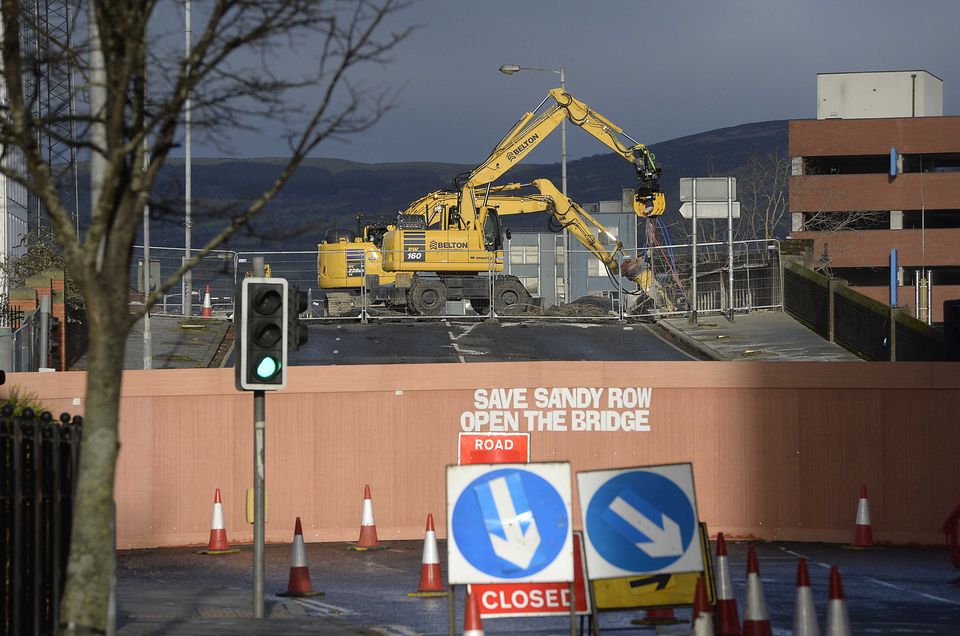Work is continuing on the demolition of the Boyne Bridge in Sandy Row on Monday, with new images showing large parts of the structure having been removed.
Diggers moved in to the site on Friday to start the removal work, with the bridge being dismantled as part of the further development of Belfast’s Grand Central Station.
There have been a series of protests against the removal of the bridge in recent weeks.
In October the Ulster Architectural Heritage Society (UAHS) went to the High Court in a last-minute bid to stop the work starting.
The society contend that the bridge should be preserved due to its importance in the history of Belfast.
However, a judge ruled that the closure of Durham Street could go ahead as planned.
The original bridge at the site is believed to have been built in 1611, over what was known as the Blackstaff River.
It was replaced in 1642 by the Great Bridge of Belfast, later known as the Saltwater Bridge.
Pacemaker Press 02-12-2024: The Boyne Bridge near Sandy Row, is being dismantled as part of the redevelopment of the streets around the new Grand Central Station.
Picture By: Arthur Allison/Pacemaker Press
King William of Orange is said to have crossed the old bridge in June 1690 on his way to the Boyne, while King James II is also thought to have retreated along the same path.
The modern Boyne Bridge was constructed in the 1930s around the remains of the previous crossings.
In a previous statement a Translink spokesperson said the Durham Street area will close for up to 12 months as they “sensitively dismantle the existing 1936 Durham Street/Boyne Bridge to facilitate the safe completion of the first phase of streets works associated with the new station.”
They added: “Our contractor will seek to preserve key elements of the bridge, and we are continuing to engage with the local community on an arts and heritage programme which will utilise these materials for future projects.”
